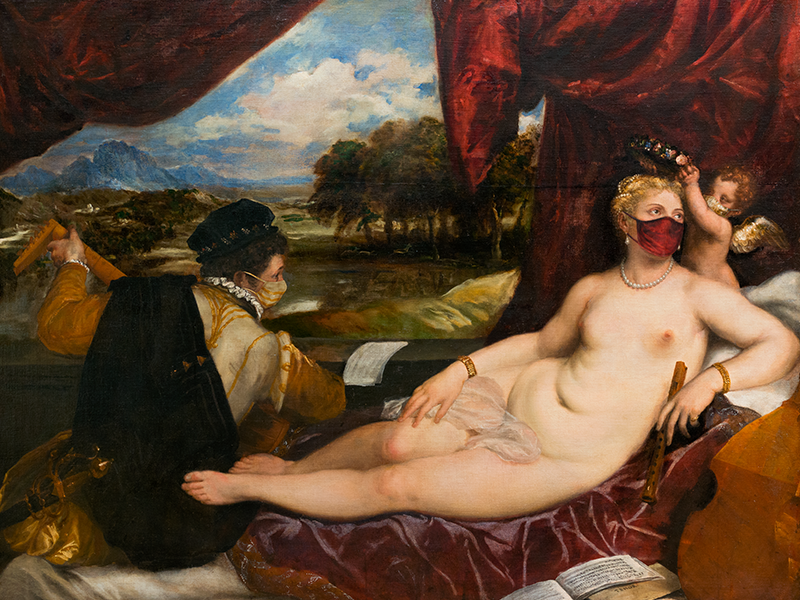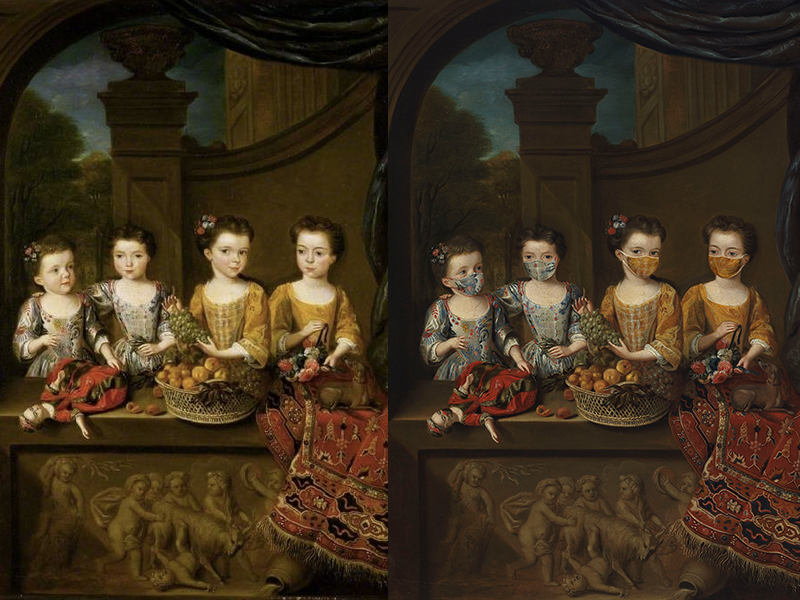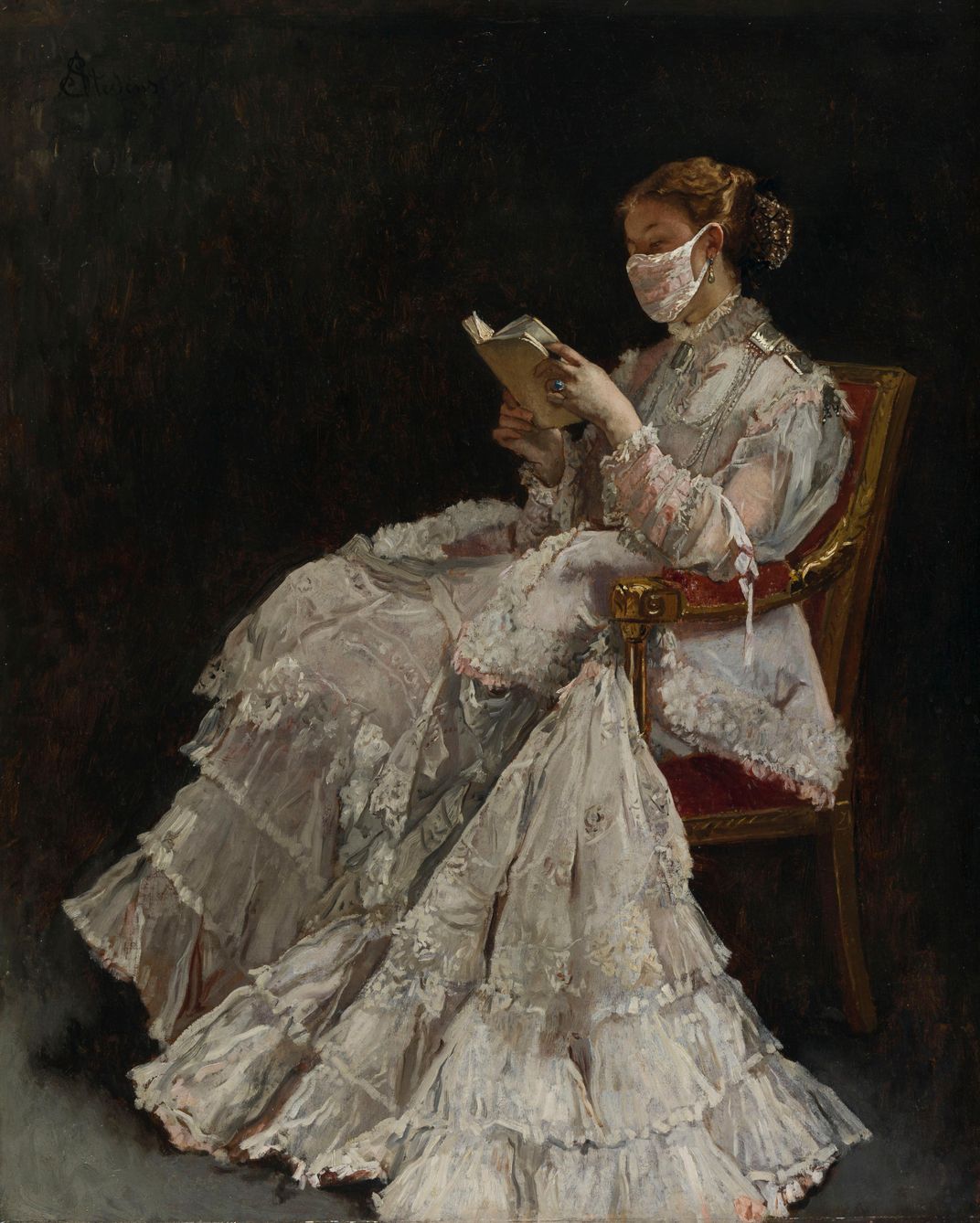U.K. Museum Reimagines Classic Art With Face Masks
The Fitzwilliam Museum in Cambridge has released greeting cards of six paintings adapted for this “most unusual year”
/https://tf-cmsv2-smithsonianmag-media.s3.amazonaws.com/filer/62/56/6256f6d1-5d34-43f1-b488-c1047f1e7501/bridesmaid.png)
As lockdowns lift across the United Kingdom, many museums temporarily shuttered by COVID-19 are facing financial challenges. One such institution, the Cambridge-based Fitzwilliam Museum, has announced a timely initiative designed to help cover the shortfall: Per a statement, patrons can now purchase greeting card versions of six classic paintings reimagined to reflect “this most unusual year.”
In the edited artworks, subjects don face masks that match their outfits’ or surroundings’ color and texture. Selected paintings range from Titian’s 16th-century masterpiece Venus and Cupid With a Lute Player to John Everett Millais’ 1876 portrait The Twins, Kate and Grace Hoare. In the latter, the sisters wear white masks patterned with flowers that match the blossoms pinned to their jackets.
A modified version of a 1638 work by Anthony van Dyck, meanwhile, finds titular figure Rachel de Ruvigny, Countess of Southampton, as Fortune sporting a mask that appears to be made from the same blue silk as her flowing dress.

“These doctored versions of some of the Fitz’s great masterpieces wittily reimagine their protagonists as living at this moment,” says museum director Luke Syson in a statement quoted by CNN’s Amy Woodyatt. “What a difference to our understanding of their actions and interactions the addition of a face-cover makes.”
As the museum observes, Millais’ twins appear to be donning face masks in preparation for an outing with their dog. In the U.K., face masks are recommended for anyone in an enclosed space or crowded area; they are also required on public transport.
In The Daughters of Sir Matthew Decker, painted by Jan van Meyer in 1718, four young girls wear masks that match their dresses. Even a doll lying on the table in front of them has her own custom face covering. The subjects of Millais’ The Bridesmaid and Alfred Émile Léopold Stevens’ La Liseuse (The Reader) similarly don masks that complement their attire. Venus, who appears nude in Titian's painting, wears a mask that matches the red curtains behind her.
The Fitzwilliam’s “Masterpieces 2020 Edition” greeting card line is just one way the museum hopes to recoup income lost during its extended closure. Shakespeare’s Globe, Jane Austen’s House Museum, the Charles Dickens Museum, and the Edward Jenner house and museum are among the many other British cultural organizations currently struggling financially.
“The cleverness is that the art direction for the masks [is] consistent with the style of each painting,” a museum spokesperson tells BBC News. “This specially designed range provides a unique perspective on our current lives through the art we know and love.”
The six paintings’ subjects join an array of other artworks in donning face masks: As Michael Solomon wrote for Forbes in May, the eight golden statues that line the Trocadéro in Paris; Cyrus E. Dallin’s 1910 sculpture of The Scout in Kansas City, Missouri; and a likeness of Marilyn Monroe at the National Harbor in Maryland have all been spotted with facial coverings. Even the T. rex outside of Boston’s Museum of Science received a “dino-sized” face mask.
“[P]erhaps [the paintings] make a serious point too,” says Syson in the statement, “of how we expect to greet one another with hugs and kisses—and how much changes when that’s not possible.”
He adds, “At least we can still laugh together. That’s not changed. And I hope these might help.”
/https://tf-cmsv2-smithsonianmag-media.s3.amazonaws.com/filer/58/ab/58abcac9-3bcf-464e-a99a-1b701d0b3962/twins.png)

